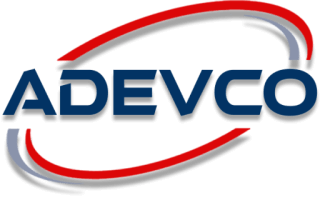
Maximize Your Operational Efficiency With Mobile Devices.
Mobile apps have revolutionized the way companies do business. From viewing critical performance data remotely to updating systems on the go, mobile apps offer real, appreciable efficiency gains. On the surface, these efficiencies may not be apparent, but if you reexamine your operations while keeping mobile device features in mind, you may discover significant potential for long term ROI. The steps below are intended to help you identify potential efficiency gains through the use of mobile devices.
Step 1: Identify the "roamers" in your organization.
By "roamers" we mean people that move around to do their jobs. This could be a technician at a customer's residence, on a job site, or moving around a warehouse. It could be a person that travels often or occasionally. It could even be someone that’s usually stationary, but moves around your facility or grounds from time to time. No matter the situation, you are looking for people that move around.
Step 2: Visualize the "roamer" using the features of a mobile device.
Once you've identified the "roamers'', now visualize their job duties while taking into account all the features a mobile device provides. The camera, fast input, voice to text, bar coding, NFC scanning, video conferencing, video/voice recording, connectivity anywhere, connectivity to your existing systems; think about whether these features, individually or collectively, could be used to make the job easier.
As a simple example, take the dreaded expense report. The pains of filling out expense reports are well documented, especially for traveling staff. Let's suppose your employees could use a mobile phone to take photos of receipts, quickly categorize the charge and cost code, and submit the report using a mobile phone. This would not only speed up the process, but it would also reduce errors on the report and in accounting.
While this example is pretty straight forward, every company's operations are unique. The key is to visualize your own operations and discover innovative ways a mobile device can save time and effort. Look at your bottlenecks and process constraints. Can they be overcome with a mobile device?
Side Note: We should mention that a "roamer" could also be (and often is) a customer, not just an employee. Remember to give equal consideration to potential efficiency gains via your customer's mobile device.
Step 3: Conduct an ROI analysis.
The next step is to arm yourself with data to justify your project. Using our expense report example, suppose on average a mobile expense report app saves a total of 30 minutes per report (between the "roamer", the accounting staff, and reduction of errors). Furthermore, suppose your organization does 100 expense reports per month. Conservatively, let's say total FTE cost is $40/hour. That's a total savings of $2000/month, and obviously the rewards increase significantly for companies that do many more expense reports.
Now that you've calculated the return, it's time to identify the cost of the investment. Many factors can affect the cost of your app such as the number of screens and their complexity, as well as the technology stack of your existing system. But for the sake of discussion, let's estimate a fixed cost price of $20K to build the entire expense report app, including the integration into your existing environment. If you are a larger company that does, say 500 expense reports a month, you'd save $10K the first month, and by the end of the second month the app would have already paid for itself (preceding numbers are only examples intended for the purpose of discussion).
Keep in mind that conducting a reliable ROI analysis will involve getting reliable cost estimates from your software company. We touch on this topic in the next section.

Step 4: Find the right software company to implement your plan.
Finding the right software company can seem like a daunting task, so we’ve highlighted several points below to keep in mind when making this decision:
- Your software company should be an excellent communicator.
The importance of communications in a software project cannot be overstated. Put simply, communications will make or break your project. Your best bet is to work with a software company that provides a business and tech savvy analyst (or PM) that communicates extremely well.
- Does your software company have the technical and industry experience to complete your project?
This may seem obvious, but with so many choices to choose from, it takes a lot of homework to make sure you are dealing with experts. Make sure your software company has extensive experience in your technology stack, as well as your industry space.
- Know your cost up front if possible.
There are many advantages to you when you know how much your project will cost up front. It will allow you to calculate your ROI, which in turn will give you the ammunition you need to get your project’s budget approved. Furthermore, if you and your software company can agree on a contractual fixed price for the project, it reduces the risk of cost overruns, and it provides an incentive for the software company to finish on time and under budget.
- When will your project be finished?
It’s hard to get a project approved when the answer is, “I’m not sure”. Projects with no end date are risky, so make sure your software company provides a schedule that clearly indicates when they’ll finish the work.
- The scope of work should be in your contract.
Having a clearly defined scope of work will benefit you and your software company. It tells the vendor what they are contracted to provide, and it also helps you determine your own boundaries. If there's ever a question about whether a feature is out of scope, you can always refer to your contract for a definitive answer.
In Conclusion.
It may take some digging, but if you identify the “roamers” in your organization, and if you visualize their job duties in the context of mobile device features, you might identify significant cost savings potential. Once identified, conduct an ROI analysis to get good ammunition to have your project approved. Lastly, make sure you select the right software company for your project. You’re looking for an excellent communicator with extensive experience, and also one that will provide the cost, schedule, and scope of work up front.
If you need any assistance with your project, ADEVCO, INC. offers free consultations so reach out to us anytime via our website, or you can email us directly at sales@adevco.inc. Also follow us on LinkedIn.

ADEVCO, INC. is a leading edge U.S. based software company specializing in enterprise custom software development for mobile devices, web-based applications, desktop/server environments, process automation, and integration. ADEVCO brings over two decades of experience, developing robust, enterprise applications for a wide range of industry sectors including retail, e-commerce, telecom, healthcare, finance, accounting, logistics, and public safety.
Comments
-
Leave a message...
 News: ADEVCO Develops Fully HIPAA-Compliant Psychiatric Care EMR in Under Four Months.
News: ADEVCO Develops Fully HIPAA-Compliant Psychiatric Care EMR in Under Four Months.





Great article! This is a great process to try and take advantage of mobile devices. ty